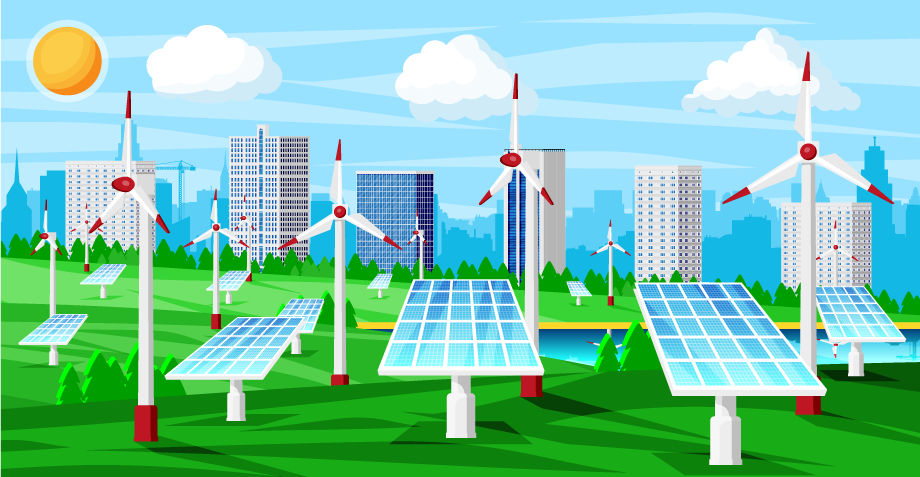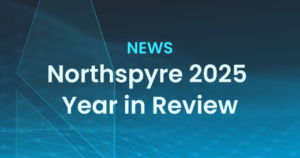Net zero buildings, or properties that produce as much energy as is consumed over the year, may soon become an important part of your firm’s efforts to meet Environmental, Social, and Governance (ESG) targets. The White House set a goal to make zero emissions new construction and retrofit common practice by 2030. To help public and private entities transition to buildings with zero emissions, the U.S. Department of Energy set a new definition for zero energy buildings, outlining the three core principles developers need to prioritize.
Zero emissions buildings, under the new definition, must meet the minimum criteria for being highly energy efficient, free of on-site emissions or energy use, and powered solely by clean energy. Developers looking to help shape sustainable and eco-conscious communities and be in compliance with ESG goals can use the guidelines to demonstrate a building’s sustainability and green potential. Net zero building definitions set by the DOE are not a regulatory measure, but keeping in compliance with the definition can help with eligibility for LEED and other green qualifications.
Here’s a closer look at the new net zero building definition, and how the guidance will impact the future of sustainable development:
Understanding the Net Zero Building Definition
The U.S. Department of Energy drafted a new definition for net zero buildings so developers would have a standardized, consistent, and measurable guideline to follow when constructing net zero buildings. The definition applies to existing properties and new construction, but not federally owned buildings, and is not legally binding or intended as a regulatory requirement. However, the fifth update for LEED requirements will align with the definition.
Here’s a closer look at the three core principles outlined in the definition:
- Highly energy efficient: For existing buildings, their energy performance must be in the top 25% of most energy-efficient buildings on the market with similar use, based on whole-building energy use. For new buildings, the estimated whole building’s energy must be at least 10% lower than the energy use according to IECC and ASHRAE guidelines and must be designed to achieve energy performance in the top 10% of buildings.
- Free of on-site emissions from energy use, meaning the building’s direct greenhouse gas emissions from energy use are equal to zero.
- Powered solely from green energy, meaning all buildings’ energy is from carbon-free sources (which can include on-site generation and off-site sources)
The U.S. government may continue to reevaluate and update the requirements for each criterion and make changes as needed in response to the market, clean energy advancements, and developer’s abilities to demonstrate low carbon capabilities. The proposed definition is intended mainly to provide clarity and consistency to the industry, as the variety of current green building certifications have different requirements.
How Net Zero Buildings Benefit Developers
Establishing a consistent definition for net zero buildings will allow for consistency and enforceability in the industry. Building performance regulations and standards not only vary between various certification parameters, the measures can also be different from district to district. Providing a uniform definition will ensure all new construction will move in the same direction, and will give owners a verifiable set form of metrics to demonstrate a building’s sustainability to investors or government compliance agencies.
Building net zero projects can have a variety of benefits for developers. Sustainable buildings, while potentially requiring more upfront costs, provide long-term financial benefits for owners. Reduced energy bills, lower operational costs, and stronger building resiliency can all increase return on investment over a building’s life cycle. Developers on net-zero projects may also be eligible for a variety of alternative capital sources such as Commercial Property Assessed Clean Energy (C-PAPE) financing or green multifamily loans.
Investors are increasingly looking to fund sustainable and eco-friendly projects, and in a recent survey of renters, 83% said they would prefer to live in an eco-friendly building while 59% reported being willing to pay more to live in a sustainable community. Net-zero projects can also help you future-proof your portfolio, as the buildings are well-aligned with societal expectations and the shifting regulatory environment around sustainable development. As the government continues to build regulatory frameworks around green construction, net zero projects will be aligned with these goals.
Challenges in Net Zero Buildings
Net zero buildings come with plenty of upside for your development team, but sustainable projects are not without unique challenges and obstacles. The biggest challenge in building a net zero building will be higher upfront costs. Implementing green technologies, finding construction teams able to execute green architectural design plans, and installing renewable energy systems can all drive up vendor costs. Securing financing for an ambitious sustainable project may also be more difficult, as investors could deem the development process to be higher risk. However, investors are increasingly looking to put capital toward resilient, climate-friendly projects, allowing for more opportunities in capital markets in the coming years.
Design and construction of a sustainable building can also present obstacles for your team. Vendors with specialized experience in sustainable building practices may be more difficult to find or in high demand, which could impact construction timelines. Green construction may also be subject to additional regulatory requirements – especially if your project is funded by C-PAPE or other government financing, or you are looking to secure a LEED certification. Managing the additional documentation properly will be essential to ensure regulatory hurdles don’t derail your project timelines and cause overruns.
Even with these unique challenges, net zero buildings have been a successful component of new development in communities across the United States.
Net Zero Success Stories
In recent years, several high-profile examples of net zero buildings have provided a blueprint for successful zero emissions projects. Boston University’s skyline-defining Center for Computing and Data Sciences is, at 19 stories, the city’s largest net zero building to date. To achieve zero emissions, the building uses geothermal energy from 31 wells that extend underground. In the summer, the pipes in the walls send heat down into the ground to cool the building. In the winter the heat comes back up to warm the building.
The Center for Computing and Data Science’s architectural design minimizes electricity consumption using external sun shading devices, triple glazing on the windows, enhanced ventilating and HVAC systems, and air heat recovery systems. During the construction process, developers also subbed out sustainable building materials for old standards, resulting in a 6% reduction in embodied carbon.
The Bullitt Center in Seattle, Washington, is often referred to as one of the largest “net positive” buildings in the world, producing 30% more energy than it needs to run. Net positive buildings can deliver even higher returns by selling excess energy back to the electrical grid, which can also increase eligibility for tax credits. The Bullitt Center is also heated and cooled by closed loop wells, and the 575 solar panels affixed to the building allow it to deliver more electricity than it needs to run. Both these projects show how net zero buildings can become a critical part of a city’s infrastructure and positively impact the larger community.
Leveraging Technology to Facilitate Net Zero Building Development
Modern real estate development software can play a key role in your firm’s net zero building development process, helping you overcome green construction obstacles or challenges and ensure your property is successful. Document management is especially essential on a complex development project such as a net zero building, where the construction process and regulatory guidelines are both complex. The ability to automatically capture and organize every project document – extracting data and categorizing by budget lines – into an easily digestible dashboard can ensure your team keeps timelines on track. When your data is tagged and indexed to enable easy searching for contracts, proposals, and change orders, your team can make data-driven decisions across a project’s lifecycle.
Northspyre uses automation and proactive intelligence to keep your project on budget as early as pre-development. The platform’s Anticipated Cost Report allows you to accurately track every aspect of your net zero project’s finances, including contingency, variance, available funds, cost per square foot, and more. You can use Northspyre to bring projects to market faster, eliminating gut decisions, error-prone spreadsheets, and information silos that undermine a project before it even begins. Northspyre’s new AI capability can also drive even higher returns by helping your team with vendor selection insights, lowering bidding costs, and removing the guesswork to maximize profits.
Learn More About Northspyre
Northspyre is a purpose-built, single software solution designed using automation to reduce manual data entry, increase productivity, and maximize your returns from pre-development to project completion. The cloud-based platform enables your team to ensure every aspect of your project is readily at your fingertips for simple and effective project management. Northspyre empowers you to shift from reactive to proactive decision-making, reducing administrative tasks by up to 80% and lowering your project overruns by 66%.
Download our white paper “Software Misalignment in Real Estate Development: Right Tech For The Job:” to discover how the right technology solution can support your firm’s long term goals.



